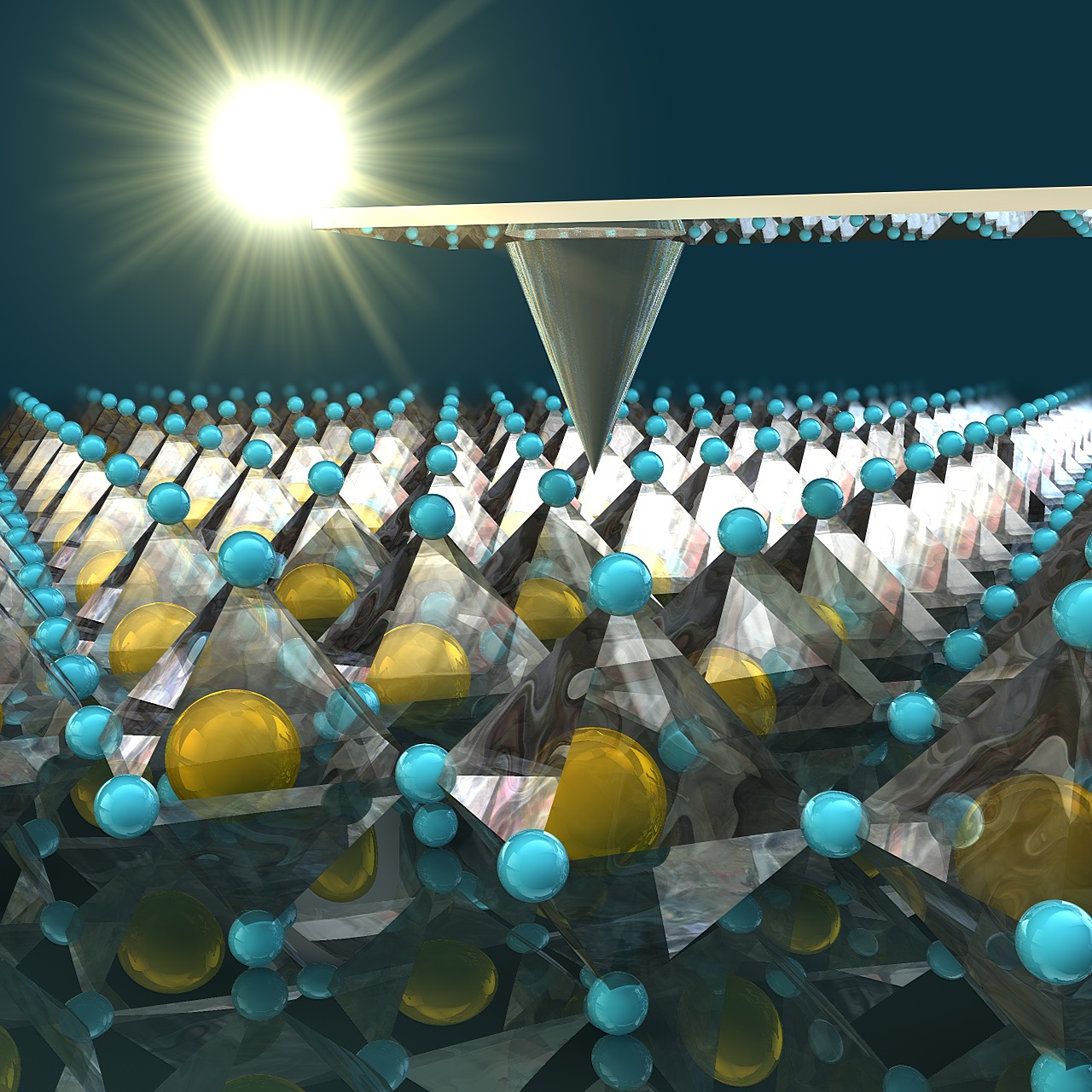Press Release
Sunbeams at the Nano-scale: the Next Generation of Solar Cells
Marina Leite and her team of researchers tackle hybrid organic-inorganic perovskites based on methylammonium lead.
FOR IMMEDIATE RELEASE March 25, 2017
CONTACT:
Katie Doyle
301 405 0379
khollan3@umd.edu

One of the biggest challenges to society today is finding clean, safe and affordable forms of energy. Scientists at the University of Maryland are working on developing novel technologies to solve such challenges, including Marina Leite, an Assistant Professor in the Department of Materials Science and Engineering and in the Institute for Research in Electronics and Applied Physics, and her team. Solar energy, which is harnessed from the light/heat of the sun, is an especially important source of renewable energy. Dr. Leite and her team are engrossed in developing new materials that can be used in energy harvesting and storage applications. Currently, they are working towards a next-gen design of solar cell devices. Specifically, they are developing microscopic imaging methods to take nanoscale photographs of the performance of emerging and inhomogeneous materials – those materials whose structure is unequal at different points. Think of the planet Earth, for example – its density varies by location (i.e. crust, ocean, mantle, core, etc.). These images can then be used in photovoltaics – the process of converting light into electricity using some sort of semi-conducting material.
A promising new class of photovoltaic material, hybrid organic-inorganic perovskites based on methylammonium lead, is currently one of the most efficient materials, and it’s cheap and easy to produce. The problem with such material is that its volatile, dynamic – the material changes once the solar cells are exposed to light and humidity, which in turn affects device performance – and scientists haven’t been able to explain why. No one had ever looked at the material’s performance in real-time through a nano-lense, until now.
“Our novel Kelvin Probe force microscopy method preserves the spatial sensitivity while increasing the scan speed by >100 times when compared to conventional ones. Basically, it would take us 30 minutes to acquire a nanoscale map of performance, and now we can obtain this same map in only 16 seconds! As a result, we now resolve in real-time and at the nanoscale, the changes taking place within the material when it is exposed to light,” Leite said. “By spatially resolving how each grain and interface of the solar cell material functions (the electrical and optical responses), we can then design devices with enhanced performance.”
This research was published in the American Chemical Society’s Nano Letters on February 22, 2017 - the paper is entitled, “Real-Time Nanoscale Open-Circuit Voltage Dynamics of Perovskite Solar Cells."
About the A. James Clark School of Engineering
The University of Maryland’s A. James Clark School of Engineering is a premier program, ranked among the top 20 in the world. Located just a few miles from Washington, D.C., the Clark School is at the center of a constellation of high-tech companies and federal laboratories, offering students and faculty access to unique professional opportunities.
Our broad spectrum of academic programs, including the world’s only accredited undergraduate fire protection engineering program, is complemented by a vibrant entrepreneurial ecosystem, early hands-on educational experiences, and participation in national and international competitions.
The Clark School is leading research advancements in aerospace, bioengineering, robotics, nanotechnology, disaster resilience, energy and sustainability, and cybersecurity. From the universal product code to satellite radio, SMS text messaging to the implantable insulin pump, our students, faculty, and alumni are engineering life-changing innovations for millions. Learn more at www.eng.umd.edu.